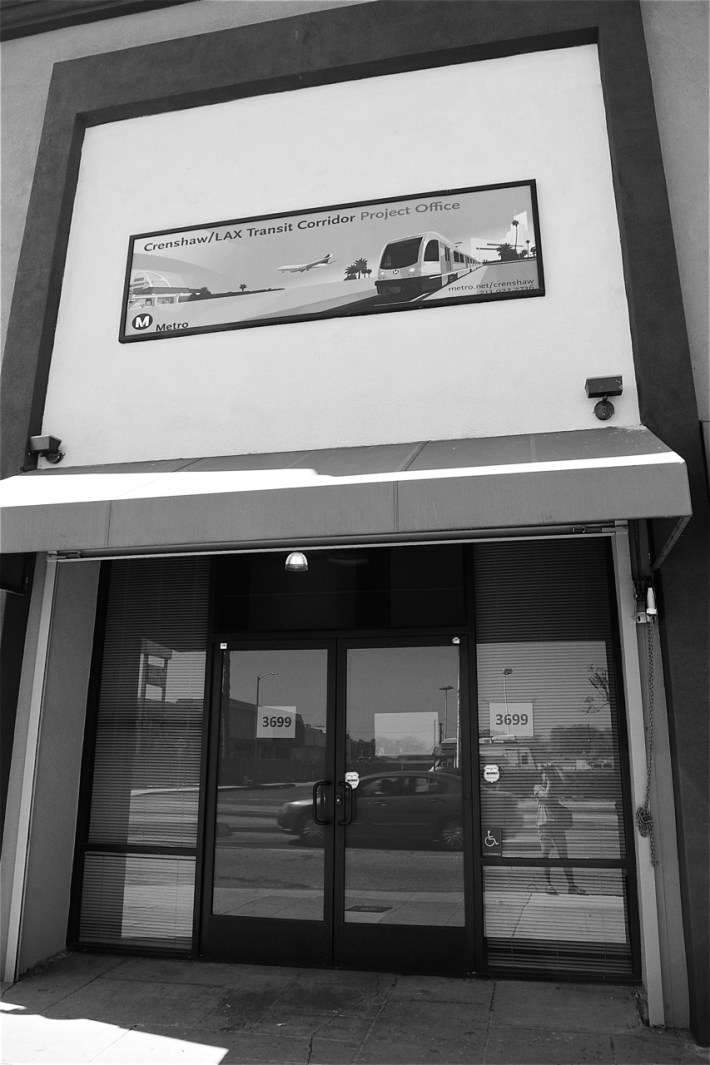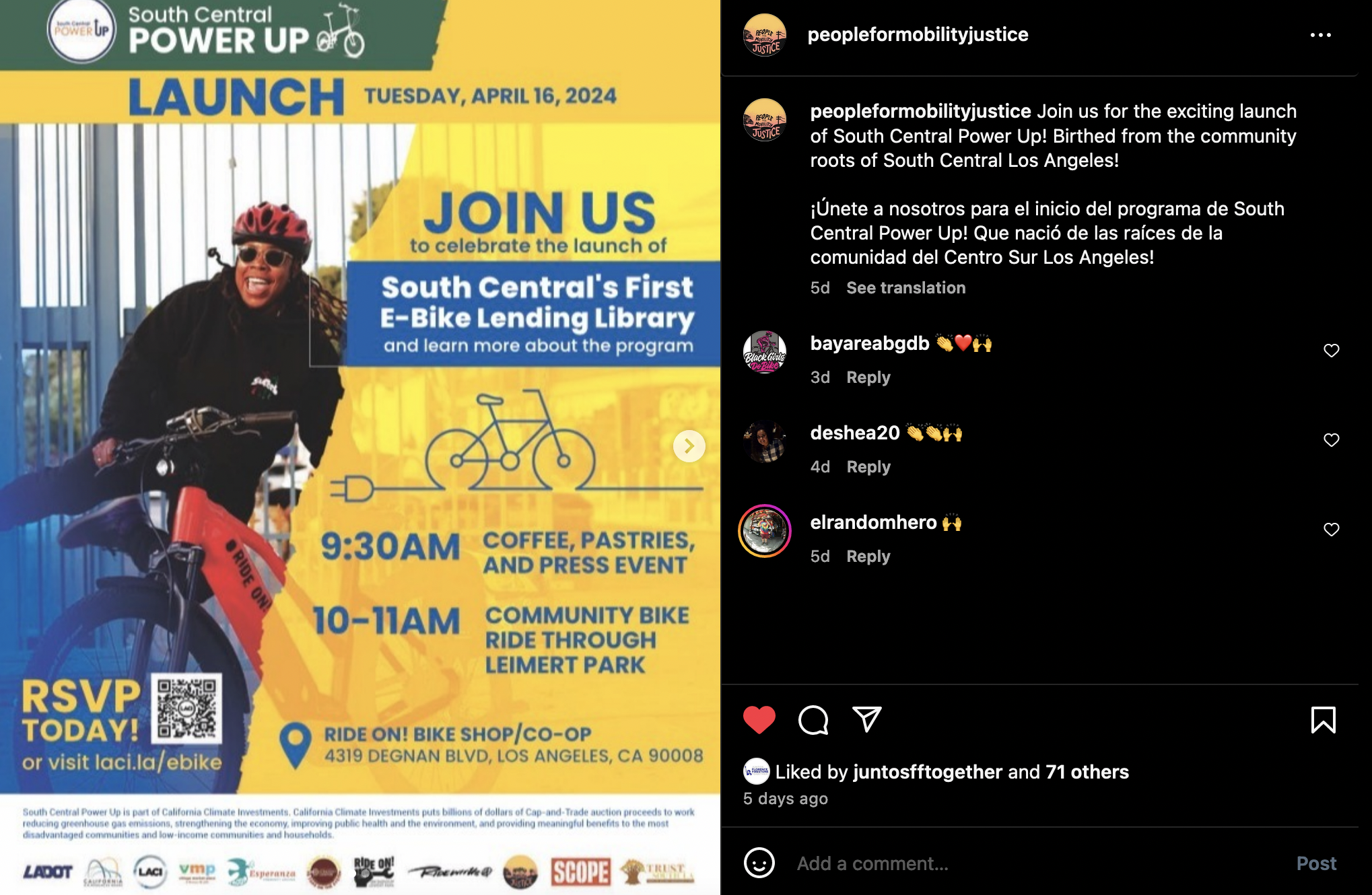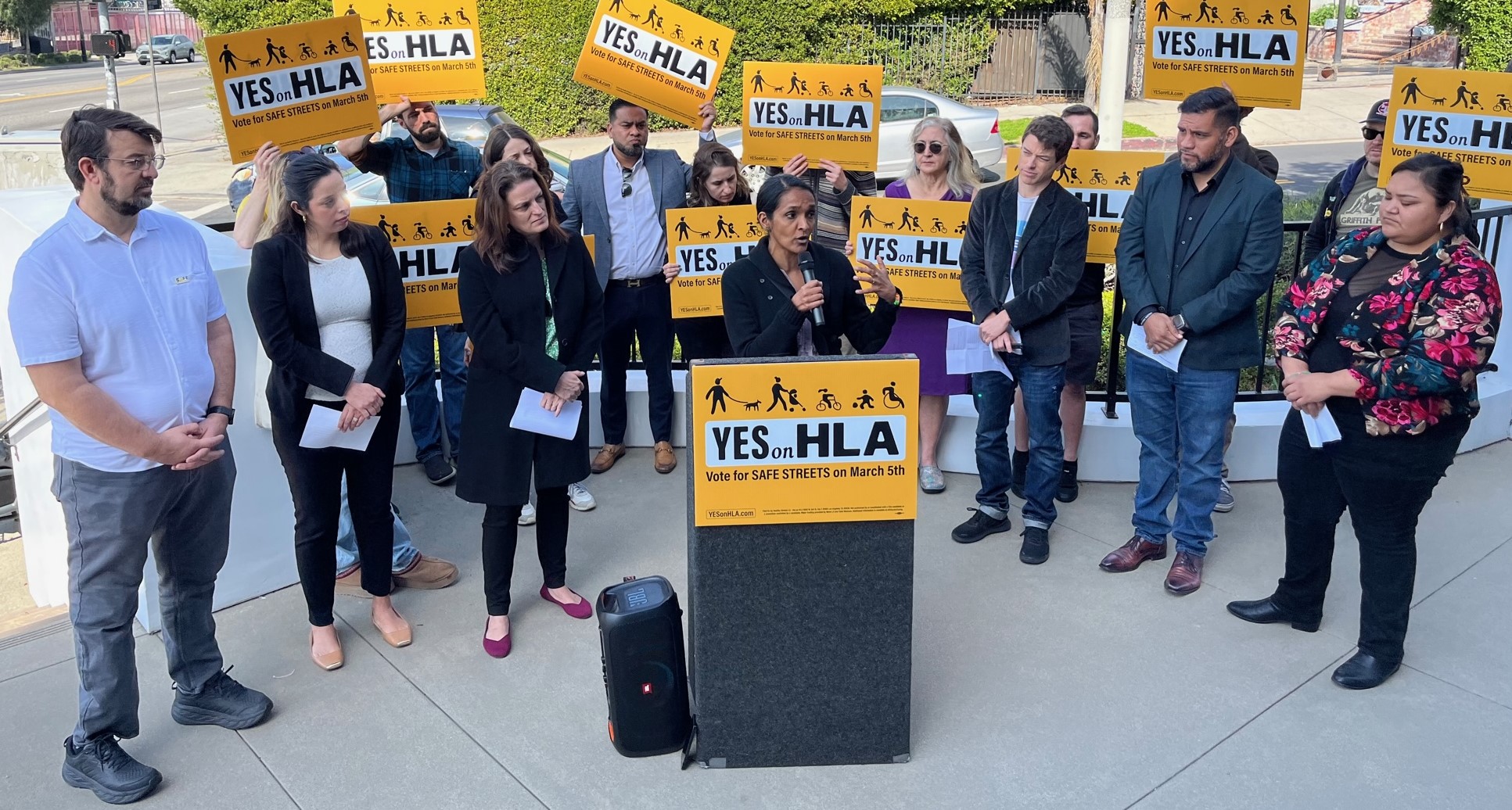Hope on the Horizon?: The Crenshaw Line and the Question of Jobs
2:11 PM PDT on September 9, 2013
At the Ready-to-Work rally on Saturday organized by the Black Worker Center, L.A. County Supervisor Mark Ridley-Thomas reassured the crowd of job hopefuls gathered in Leimert Park that the Project Labor Agreement (PLA) Metro had adopted in 2012 would ensure a portion of the jobs for the Crenshaw Line would go to the disadvantaged.
Said the L.A. Times:
"This is economic justice in real time," said Ridley-Thomas, who serves on Metro's board and was one of the most forceful proponents of the agreement. He promised to closely monitor hiring and received a round of applause after announcing that if mandates weren't met he would look to "penalize" contractors or "declare them in breach of contract."
The problem is, it isn't clear that the disadvantaged hires -- or any of the hires, for that matter -- will be from L.A.
The agreement requires that a sizable percentage of workers on any job be hired from within specific pools of "targeted workers." For locally-funded projects, a minimum of 40% of project hours would have to be worked by local community residents. A percentage of those workers would be disadvantaged (those living within economically depressed zip codes or having at least two barriers to entry to the workforce) or apprentices. Projects that have a federally-funded component must dedicate 40% of work hours to workers from disadvantaged circumstances, but must also draw from a national pool.
Therein lies the rub.
The fact that nearly $546 million of the funding for the Crenshaw Line is from a federal loan means that the search for hires must be national.
And while, thus far, Metro has been diligent in monitoring the extent to which contractors have been (mostly) compliant with hiring requirements, ensuring that jobs go to targeted workers is still a challenge.
At an informational session held at Metro's Crenshaw office earlier this summer, some workers complained that contractors will sometimes move their work team into apartments that fall within economically disadvantaged zones in order to meet eligibility requirements.
Others noted that, because the construction industry is 75% Latino and foremen like to build their own teams (meaning job access is linked to who you know), it is hard for African-Americans to break in. Some have been told their Spanish isn't good enough to work on a site. Workers who have been at the top of their trade for 20 years suggested discrimination kept them from being hired for anything more than piecemeal jobs. A man who worked in job placement said it was still hard to get women placed, regardless of their qualifications. Or they would be given jobs their supervisors knew would push them out.
Verifying income or a worker's period of residency in a particular zip code might help deal with some of these concerns. As would ensuring that the jobs going to the more disadvantaged workers were actually of some longer-term benefit to them. Because compliance is measured in project hours worked, it may be easier for contractors to give lower-paid or less steady work to the disadvantaged workers, saving the longer-term jobs for more privileged workers.
Having a strong local worker pool is also important.
A number of local organizations have gotten involved in trying to prepare L.A. workers to join the workforce. Even before Walsh/Shea won the bid, the Young Black Contractors had been trying to network with them just to get a foot in the door. The Black Worker Center has long been active in teaching workers how to build relationships with contractors, attend meetings to network, take advantage of services offered by employment agencies, and link themselves to unions. LAANE, We Build, and others inform potential workers about opportunities and help them enroll in pre-apprenticeship programs that put them on the path to construction careers.
It isn't always easy.
Because these potential workers are often truly disadvantaged, things like not having a driver's license (required for the We Build program), reliable access to a phone, or confusion regarding the process of getting a job in a skilled field can really set them back.
So can the fact that there are so few jobs available.
In fact, the contractor is currently projecting there will only be 350 positions open for work on the Crenshaw Line.
Yep.
350.
It's a far cry from the "thousands" that elected officials had told people in the area that they would be likely to see.
But, say Metro representatives, people shouldn't be discouraged.
Metro is dedicated to the PLA model in future projects, and there are many in the pipeline. Because of Measure R, Metro and Public Works will be regularly rolling out new projects for the next 25-30 years. So, even though they might not get hired for the Crenshaw Line now, the best thing workers can do is make sure they are trained and prepared to take advantage of those future opportunities.
They are on the horizon.
For more about the PLA, click here.
Sahra is Communities Editor for Streetsblog L.A., covering the intersection of mobility with race, class, history, representation, policing, housing, health, culture, community, and access to the public space in Boyle Heights and South Central Los Angeles.
Stay in touch
Sign up for our free newsletter
More from Streetsblog Los Angeles
This Week In Livable Streets
CicLAvia returns to Venice Boulevard, Metro board committees, L.A. City Council Transportation Committee, Metro budget theater, and more
Measure HLA Is Now Officially Law for L.A. City
Check the city maps to find what bus, bike, and walk improvements are coming to streets in your neighborhood





